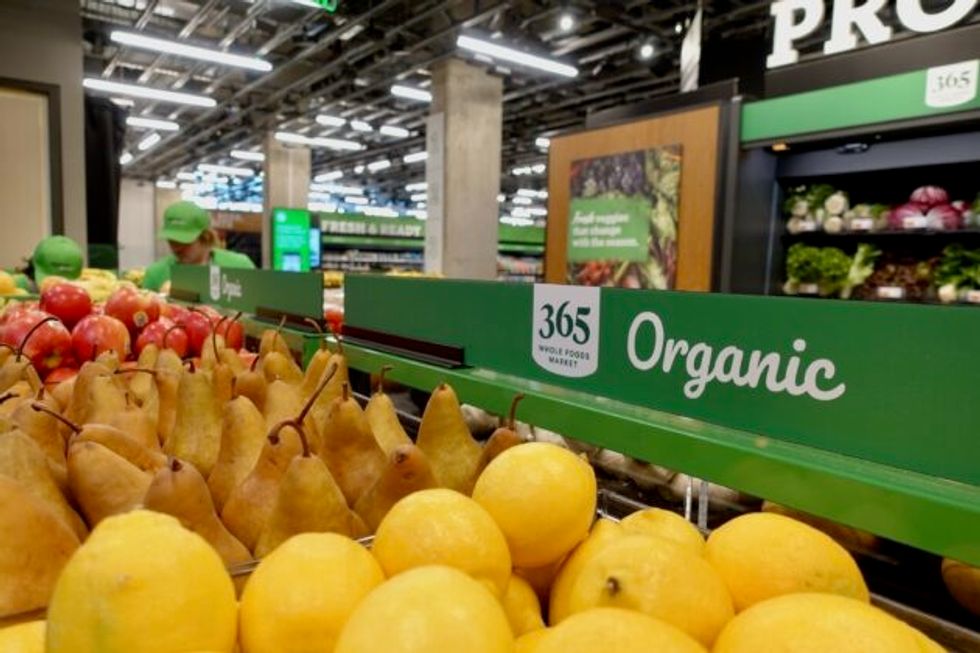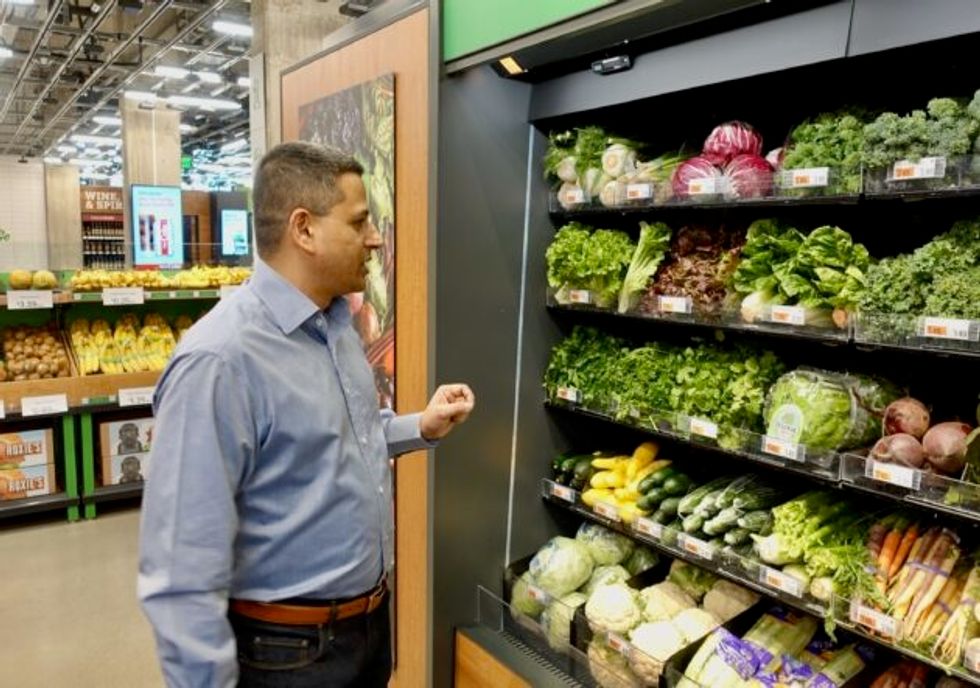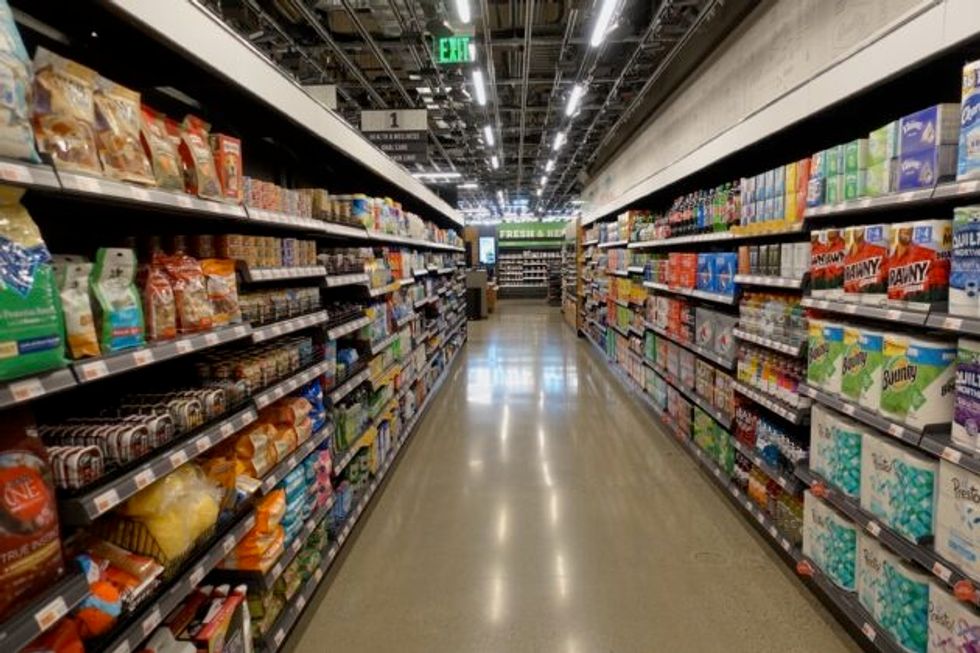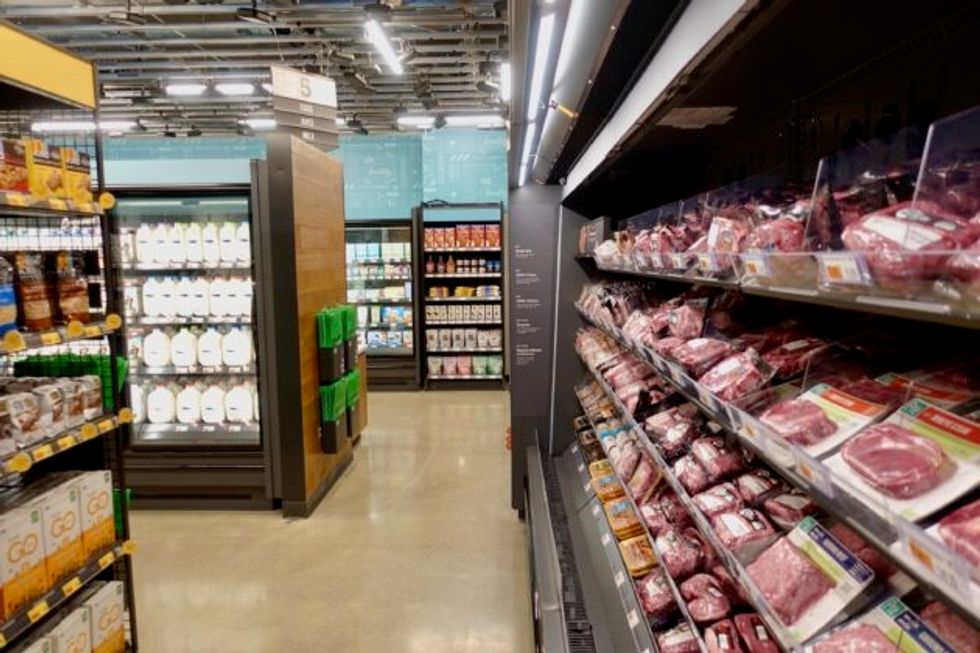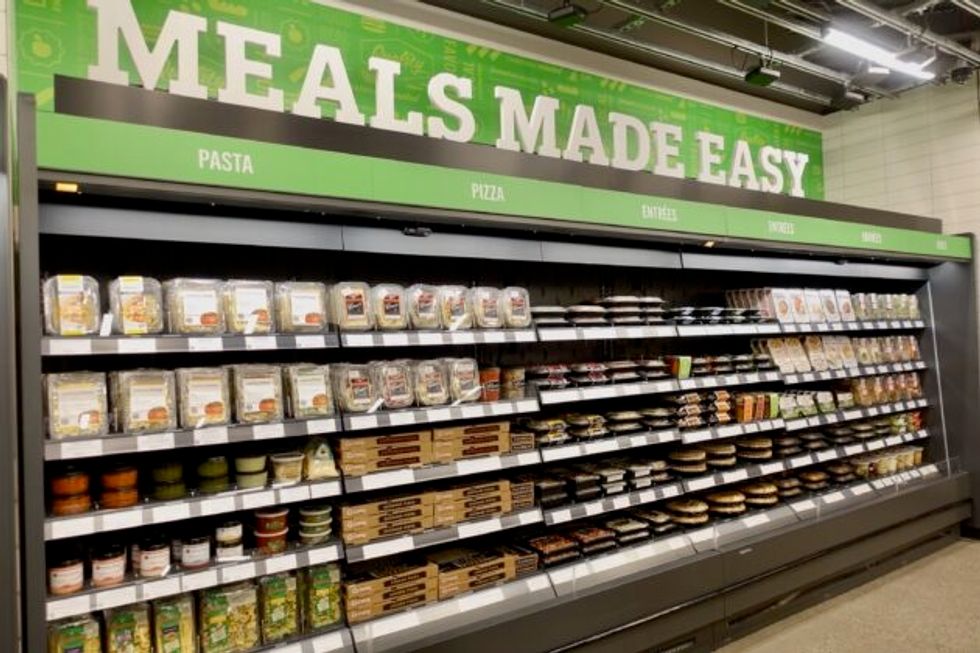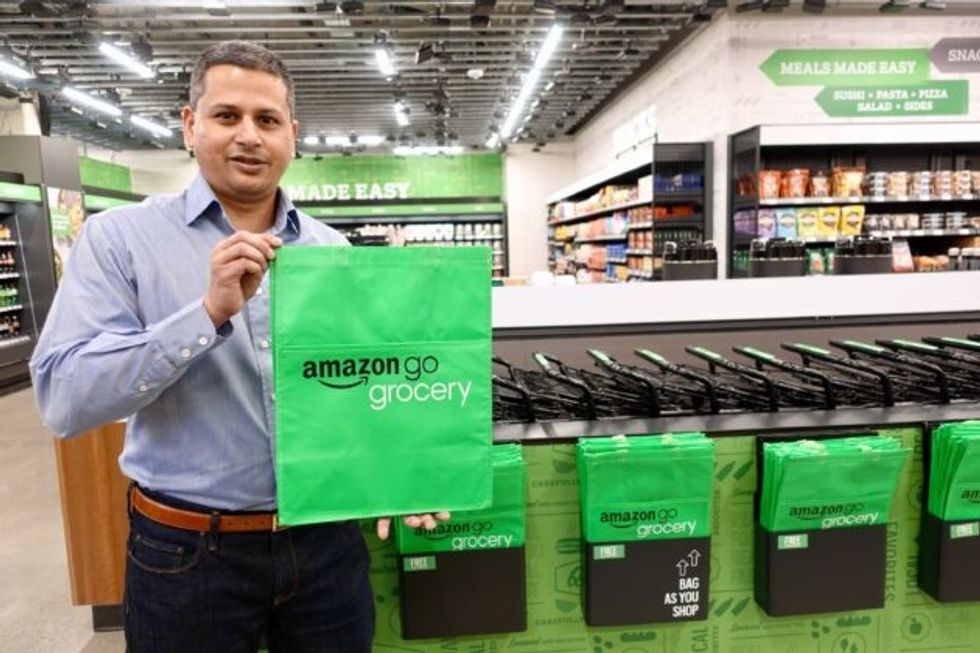There’s a new neighbor on the block in Whittier, California, and his name is Jeffrey Bezos.
After launching in the Seattle suburb of Mill Creek, Washington in April, a second location for the suburban regional variant of Amazon Go opened in California on Tuesday; an expansive 2,150 sq feet of retail space where you can grab a cold brew or kombucha on-tap while picking up a six-pack from a local brewery, grab a hot bite to eat and walk out without ever picking up your wallet.
The new location features a mix of locally-sourced artisanal snacks and beverages–including beer and wine from nearby vendors like Smog City Brewing Co. in Torrance, Placentia’s Offshoot Brewery and Sonoma's Golden State Cider– as well as Amazon’s own “Cursive” pinot noir. Amazon Go’s 30-item “Made to Order” menu, which lets you place an order from one of their similarly branded kiosks, is impressive in comparison to most grab-and-go chains that operate in similar venues. You can appreciate the little nods once again made to local cuisine, which includes the standard breakfast burritos, BLTs and chicken caesar salads along with two variations of avocado toast. There’s Pinkberry soft-serve and Stumptown Nitro Cold Brew; ICEE slushies and Health-Ade kombucha.
It’s Tina Brown’s high-low, repackaged for snacks. Though the nod to local businesses might feel a little disingenuous now, as the store wasn’t open 24 hours before California’s state attorney general sued the retailer for violating antitrust and unfair competition laws. The state contends that Amazon’s contracts with third-party sellers and wholesalers for online retail include language that blocks these businesses from selling their products for cheaper to other outlets, freeing Amazon to inflate their prices without fear of being undercut. The lawsuit only applies to their online sales, but it’s an awkward backdrop to the Whittier opening, considering how heavily it's leaning into the local brand angle.
The store features Amazon Go’s most notable feature: cashier-less checkout that scans your phone and uses facial recognition software embedded in hundreds of hidden monitors to determine what gets charged to your Amazon account. The “Just Walk Out” futuristic service isn’t flawless—see: SNL’s sketch last season—and customers also have the option of paying through their palm-reading One Touch technology, described in our piece on the Amazon Style store opening.
Launched in Seattle in 2018, Amazon Go can now be found in 29 locations across the U.S. and the U.K. The first stores were the halfway point between the corner store and (the Amazon-owned) Whole Foods; the model proved successful enough that in 2020 the company tried its hand at another venture into physical spaces, to decidedly mixed results.
Take Amazon Fresh–which till that point was the name given to Amazon’s grocery and meal kit delivery services–which opened the first of four California locations in Los Angeles. Previously, Amazon Fresh delivered exclusively from local Whole Foods, which they’d partnered with before acquiring in 2017 for over $13 billion. By the time Amazon Fresh opened a retail space, it had launched a line of grocery products aimed at more modest budgets; the Whole Foods brand now operates as its own subsidiary, separate from Amazon stores or products. Fresh has 38 stores in the United States and 17 in the U.K., as well as outposts in Berlin, Hamburg, London, Milan, Munich, Rome and Tokyo, as well as several in Singapore and India.
Other offshoots have not fared so well: in March, Amazon closed 68 retail locations, including all Amazon Books, 4-Stars and Pop-Up stores. This August, Amazon Fresh paused opening new U.K. locations after a disappointing sales quarter, even while here in the U.S., physical retail locations for Amazon saw 12% over the same period of time. (Online shopping took the hit instead.)
From that perspective, a smart play might be to take a proven success like Amazon Go’s convenience store model and expand it to the much larger market share of people who don’t live within walking distance of one. With its emphasis on its more affordable brand name supplies and local suppliers, the new model of Amazon Go stores won’t be forced to reinvent the wheel… just the WaWa. (Or to anyone not from the East Coast, the 7/11.)
Already, a third location is in the works, according to an Amazon spokesperson. in Torrance. That space will feature a 2,850 square-foot front-of-house, which is a New York apartment size larger than even the Whittier location. The opening date is still TBD, so for now anyone interested in checking out Amazon Go’s new suburban cousin can head over to 14249 Whittier Blvd, 6 AM to 10 PM, 7 days a week. And hey, have a cold brew on us.
- Amazon's New Smart Grocery Cart Will Debut in Woodland Hills ... ›
- Inside Amazon Fresh, Amazon's Ecommerce Grocery Store - dot.LA ›
- Amazon Unveils its New Go Grocery Stores - dot.LA ›


 Amazon's new "Dash Cart" uses sensors to determine which items are placed in a cart, allowing shoppers to check out automatically, without going through a traditional line. (Amazon Photo)
Amazon's new "Dash Cart" uses sensors to determine which items are placed in a cart, allowing shoppers to check out automatically, without going through a traditional line. (Amazon Photo) Amazon Go Grocery is big enough that it's offering shopping carts.
Amazon Go Grocery is big enough that it's offering shopping carts. 